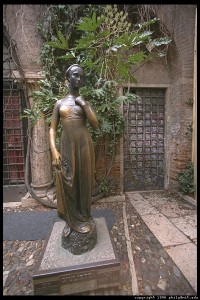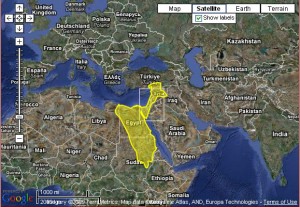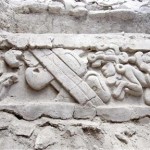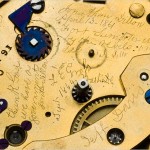 Up until now we haven’t really had reliable portraits of William Shakespeare. Only two are considered canonical: an engraving by Martin Droeshout from the First Folio of his plays published in 1623, and a memorial bust in Holy Trinity Church in Stratford-upon-Avon.
Up until now we haven’t really had reliable portraits of William Shakespeare. Only two are considered canonical: an engraving by Martin Droeshout from the First Folio of his plays published in 1623, and a memorial bust in Holy Trinity Church in Stratford-upon-Avon.
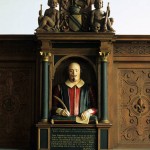 Shakespeare died in 1616, so both of these images are posthumous, and although there have been a handful of other portraits speculated to be of the bard, none of them have proven to be authentic.
Shakespeare died in 1616, so both of these images are posthumous, and although there have been a handful of other portraits speculated to be of the bard, none of them have proven to be authentic.
According to Stanley Wells, the chairman of the Shakespeare Birthplace Trust, we have a very likely candidate now in the Cobbe oil painting.
Wells is convinced that an oil painting on wood panel that has rested for centuries in the collection of an old Irish family was painted from life around 1610, when Shakespeare was 46. […]
The painting has languished for centuries outside Dublin at Newbridge House, home base of the Cobbe family, where until recently no one suspected it might be a portrait of the Bard. Three years ago, Alec Cobbe, who had inherited much of the collection in the 1980s and placed it in trust, found himself at an exhibition at the National Portrait Gallery in London called “Searching for Shakespeare.” There he saw a painting from the Folger Shakespeare Library in Washington, D.C., that had been accepted until the late 1930s as a portrait of Shakespeare from life. Looking at it, Cobbe felt certain the Folger painting was a copy of the one in his family’s collection.
Wells ran dendrochronology (tree ring dating) tests on the wooden panel, had it X-rayed and subjected to infrared reflectography. All methods confirm a date of 1610 which suggests the Cobbe painting is not just the only living portrait of Shakespeare, but also the source of later portraits like the Folger painting and the Droeshout engraving.
This confirms indications in the literary record that Shakespeare had a serious fan club when he was alive, serious enough for there to be a demand for images of him.
The Cobb portrait also presents the son of a glovemaker as something of a toff.
“The Cobbe portrait will show people a man who was of high social status,” says Wells. “He’s very well dressed. He’s wearing a very beautiful and expensive Italian lace collar. A lot of people have the wrong image of Shakespeare, and I’m pleased that the picture confirms my own feelings — this is the portrait of a gentleman.”
Not to mention kind of a babe.
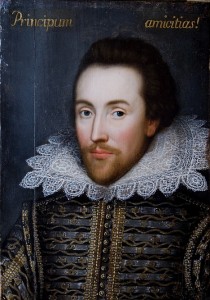
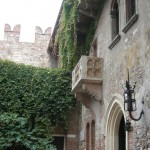 j/k on the bar mitzvahs, but it really is opening for weddings. The city of Verona is hoping to market itself as the capital of love with the famous balcony as the epicenter.
j/k on the bar mitzvahs, but it really is opening for weddings. The city of Verona is hoping to market itself as the capital of love with the famous balcony as the epicenter.